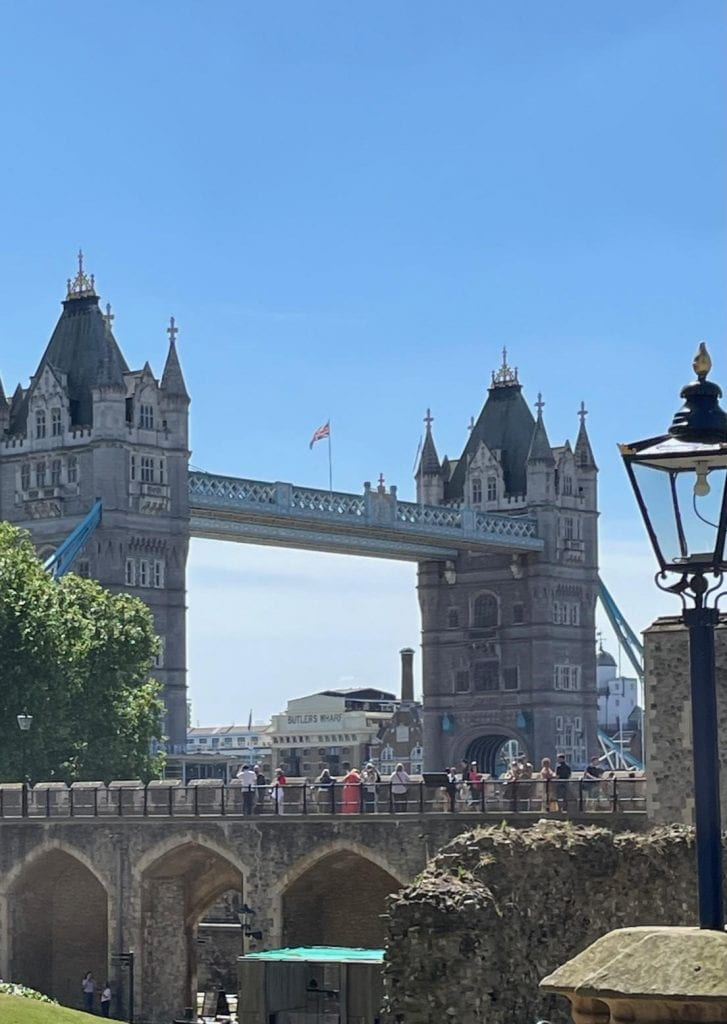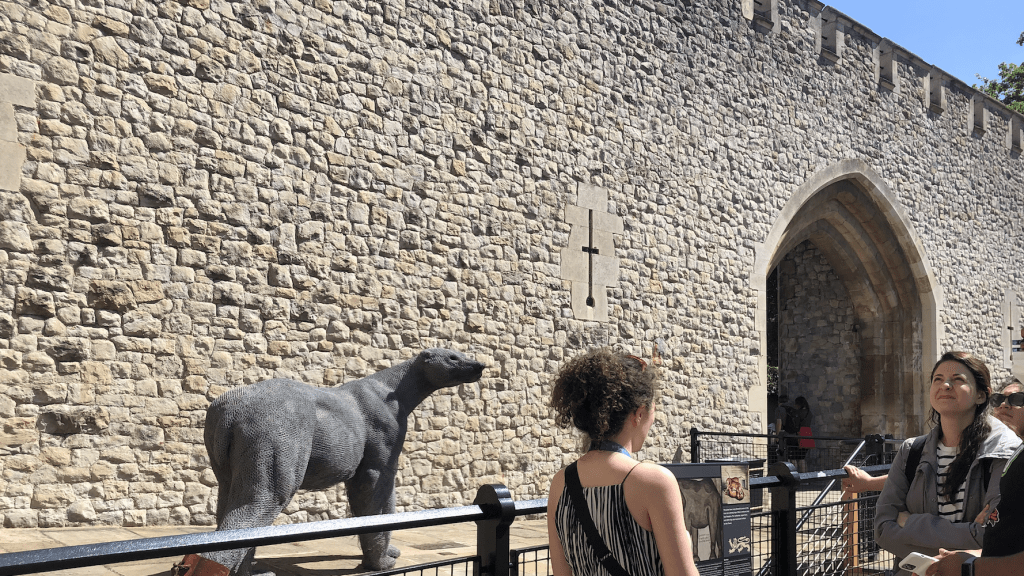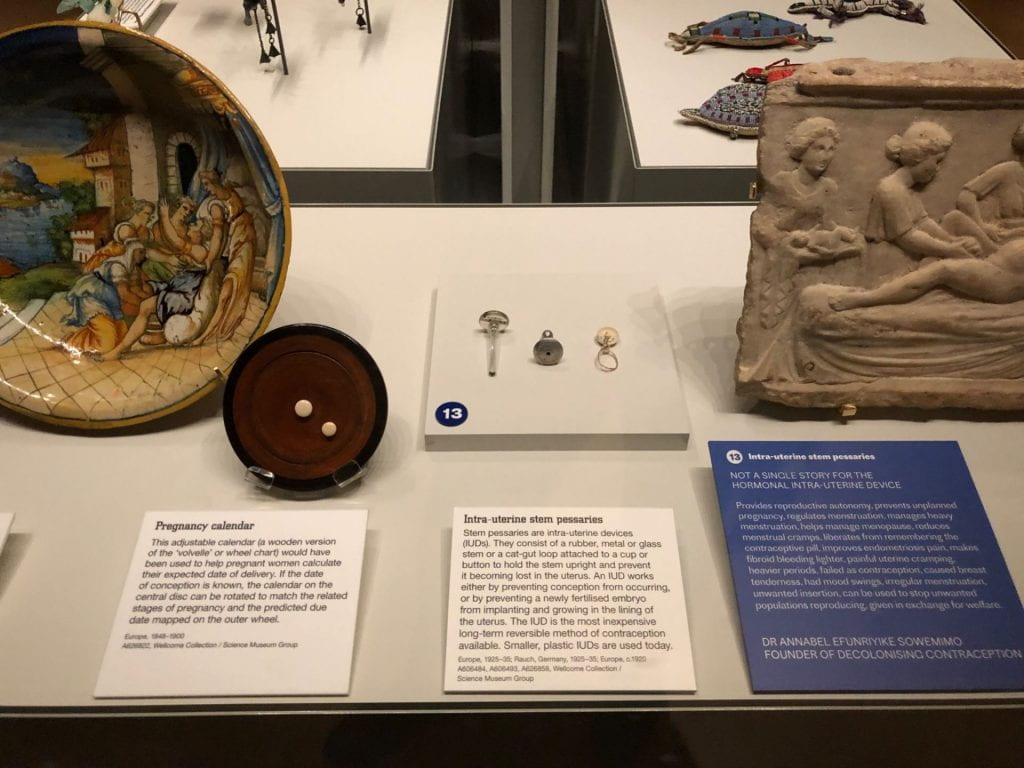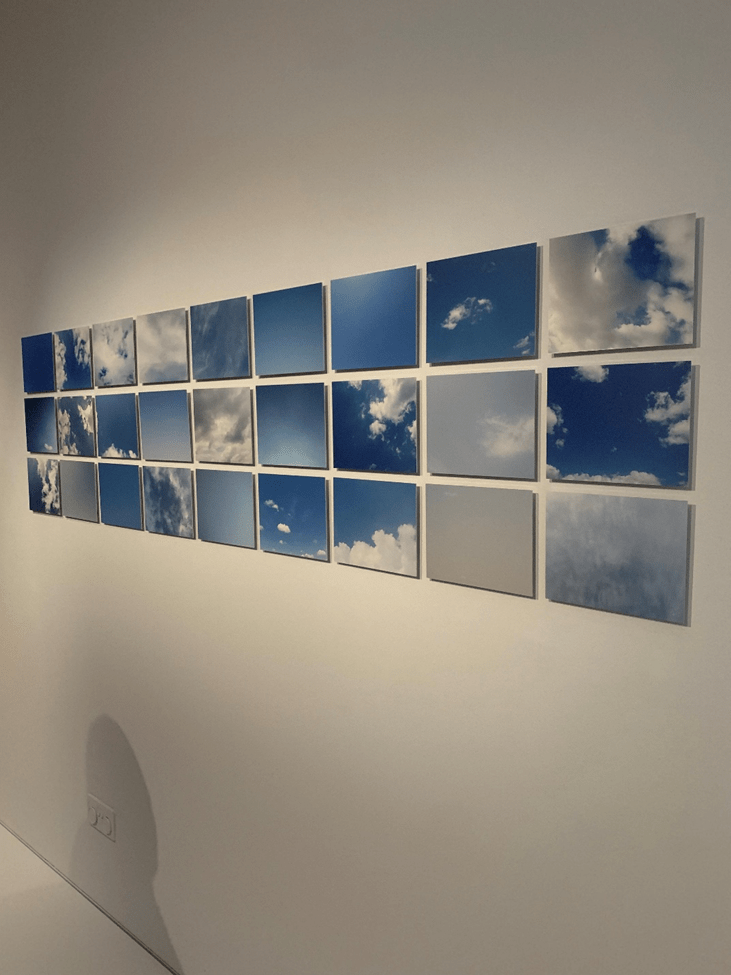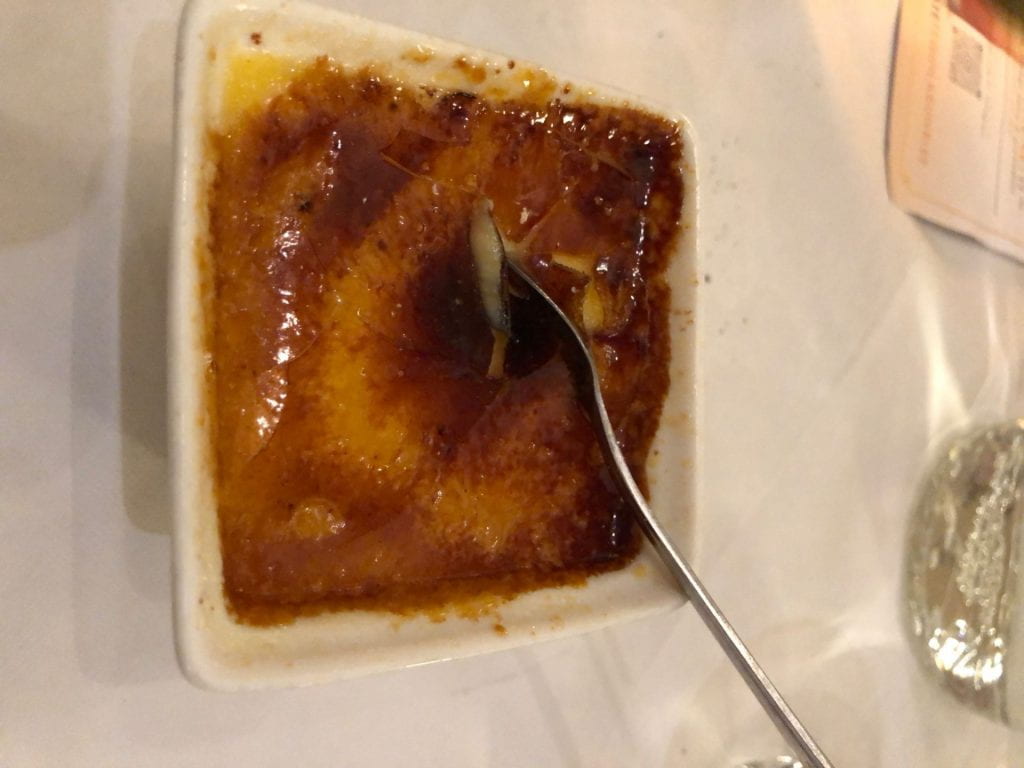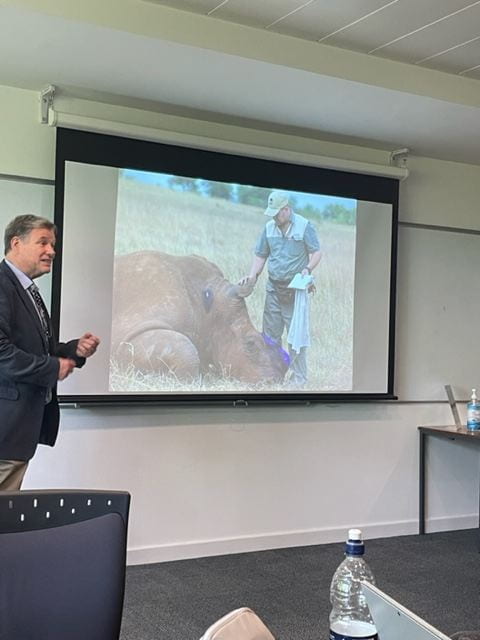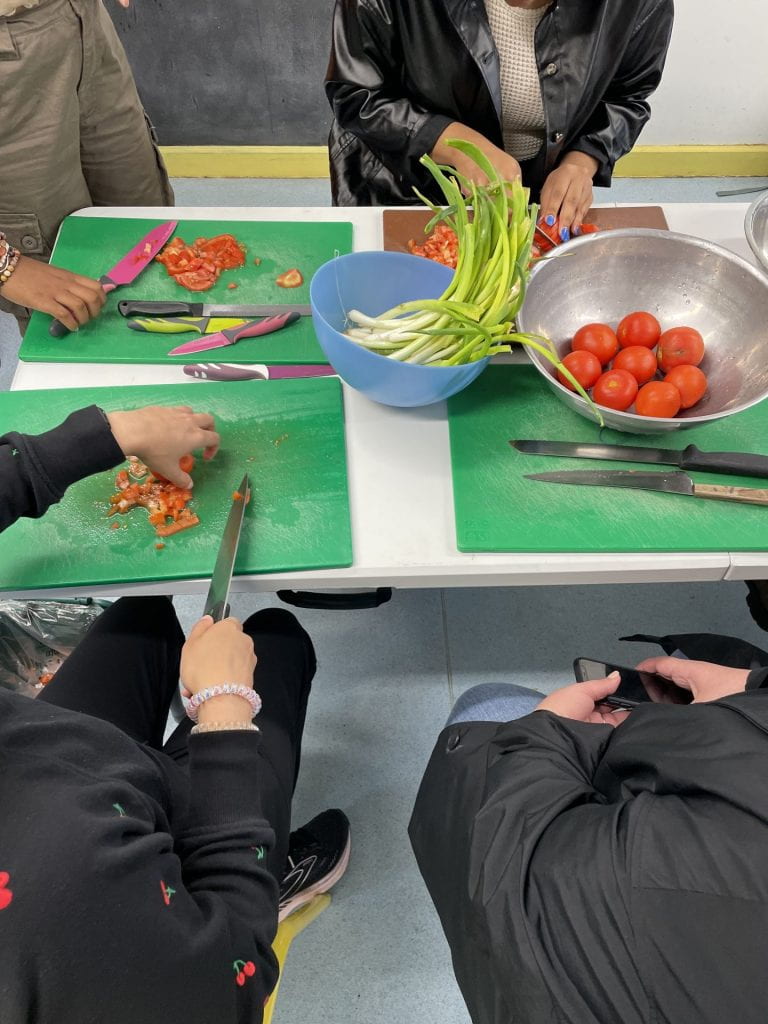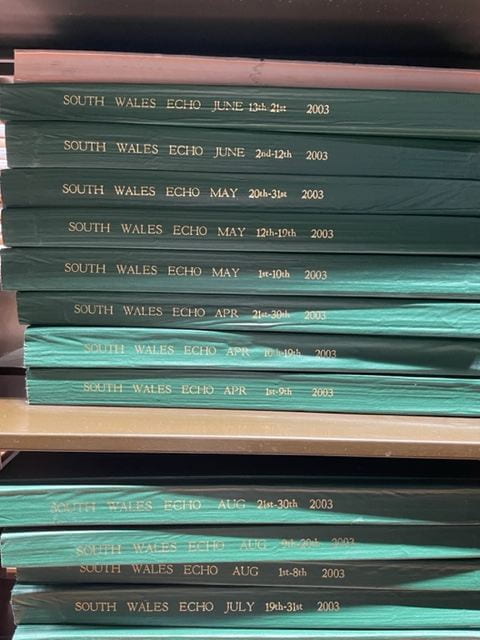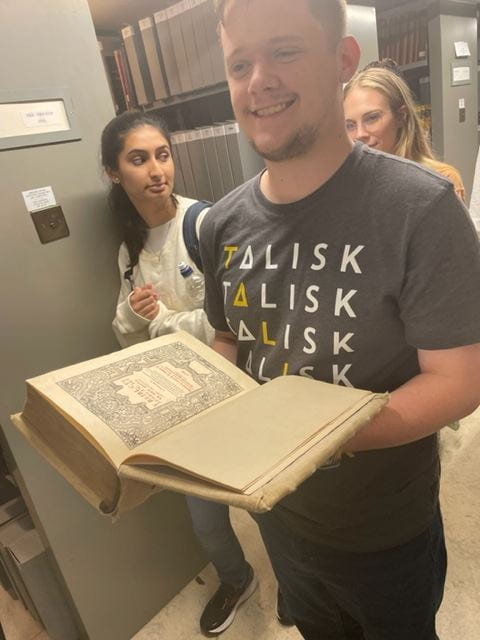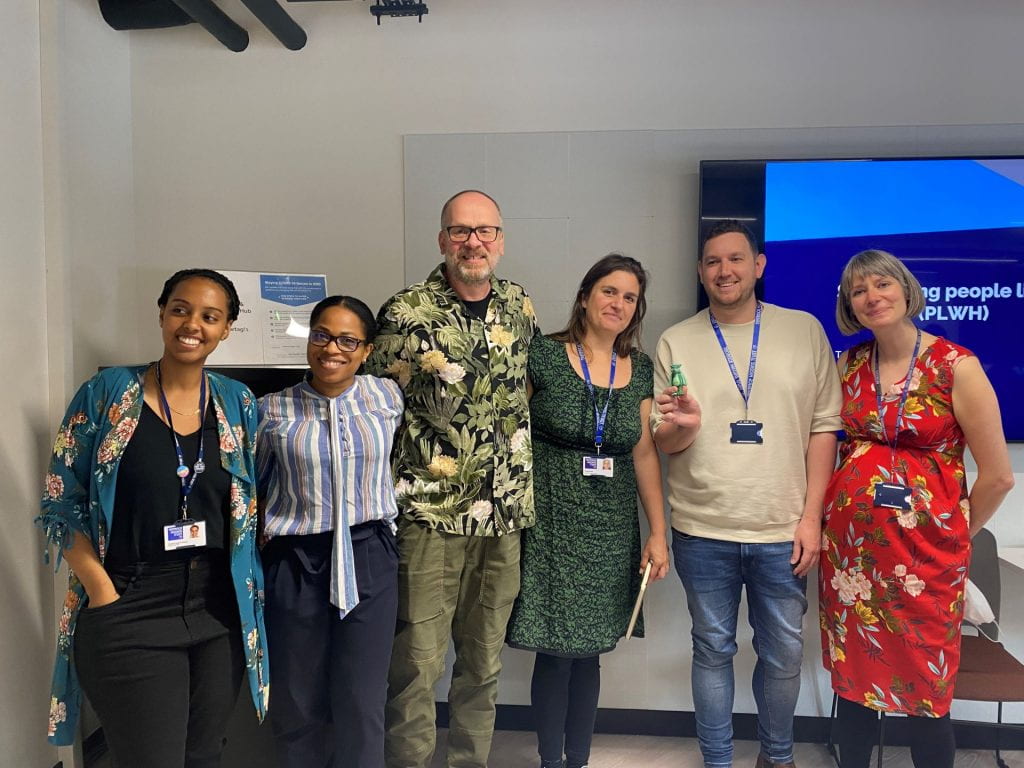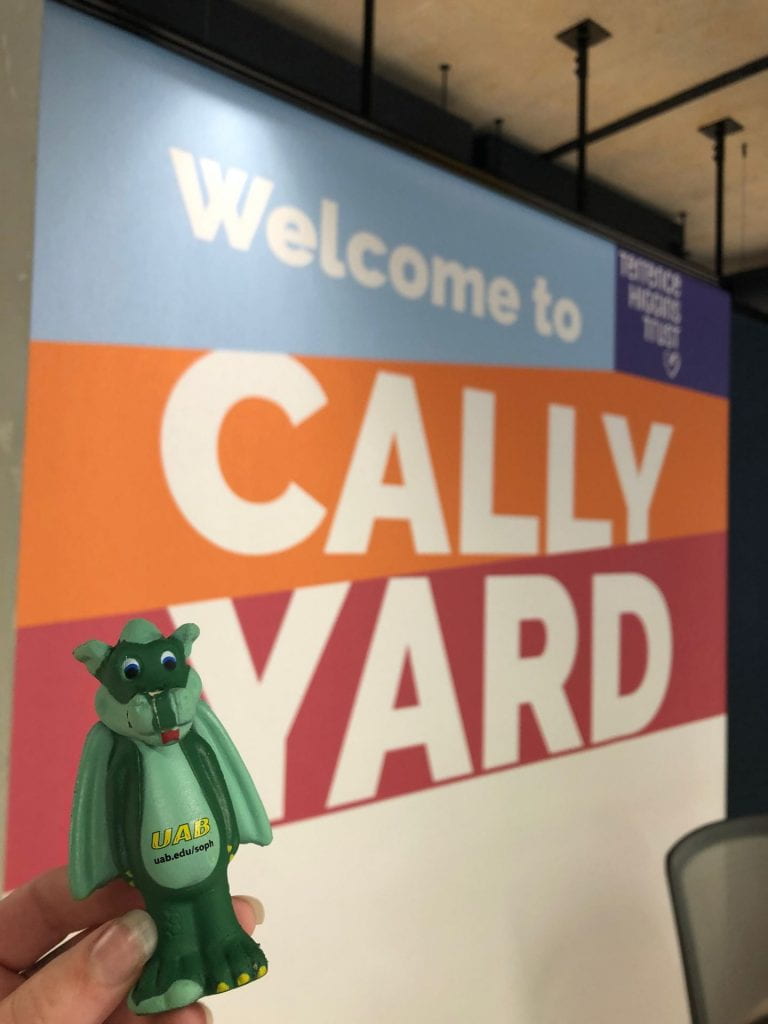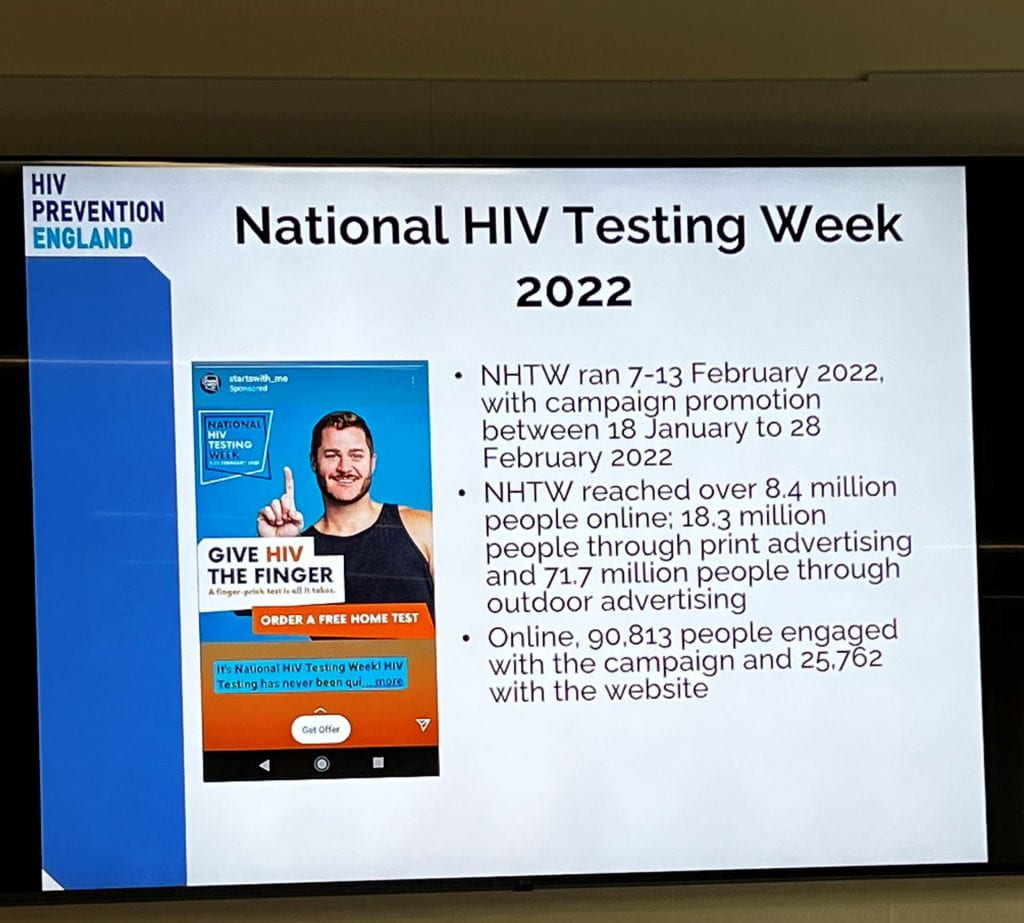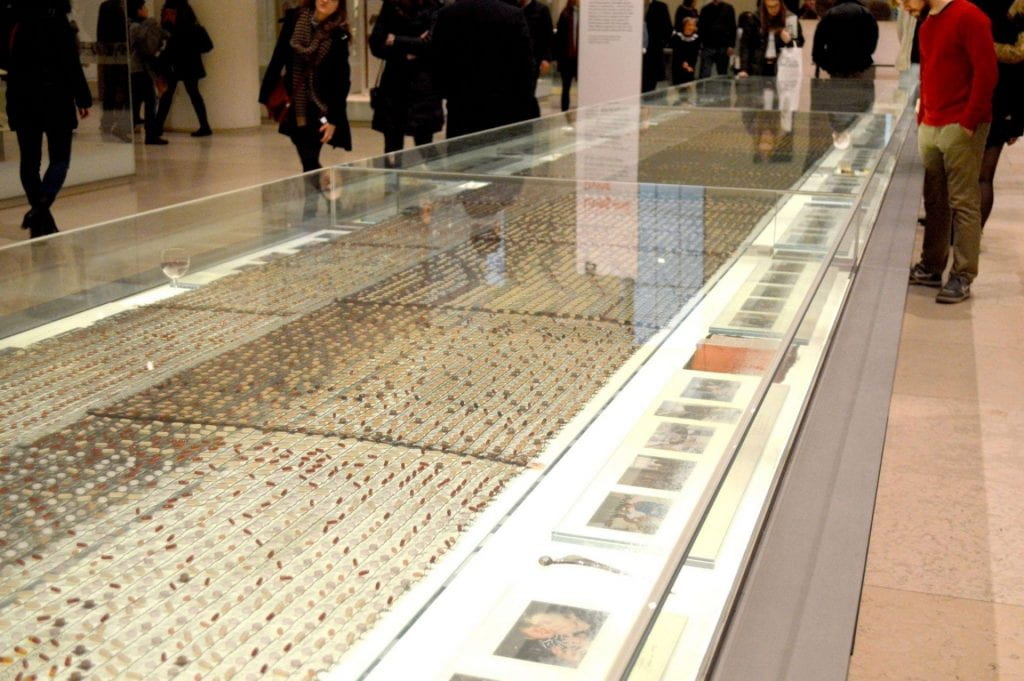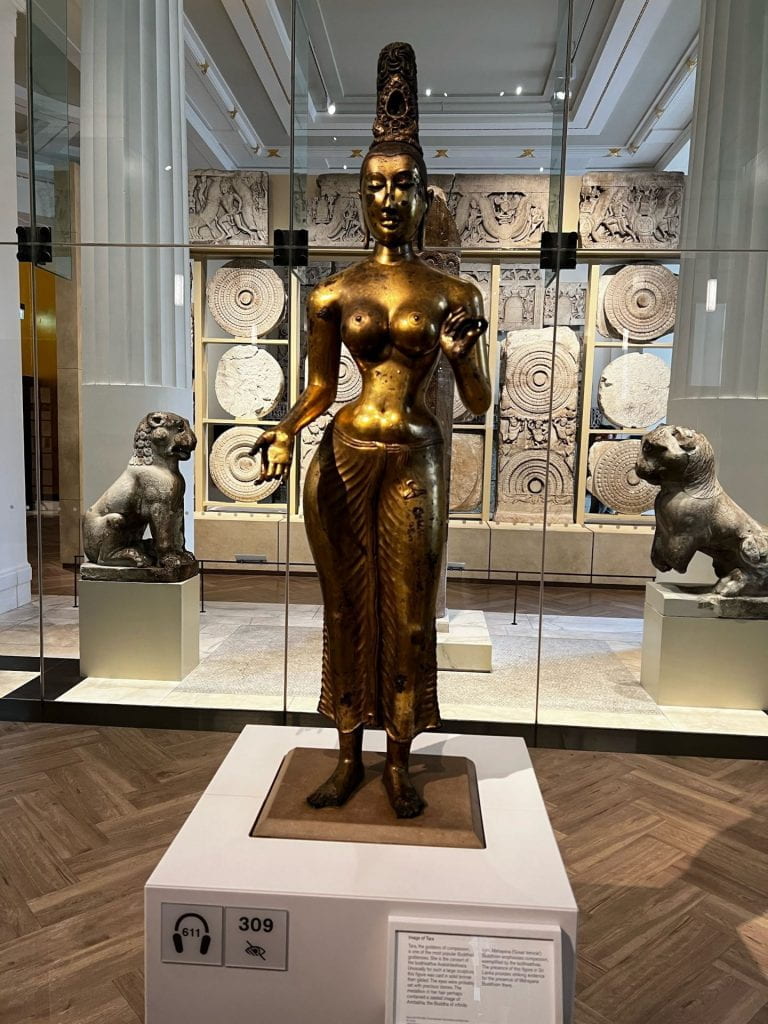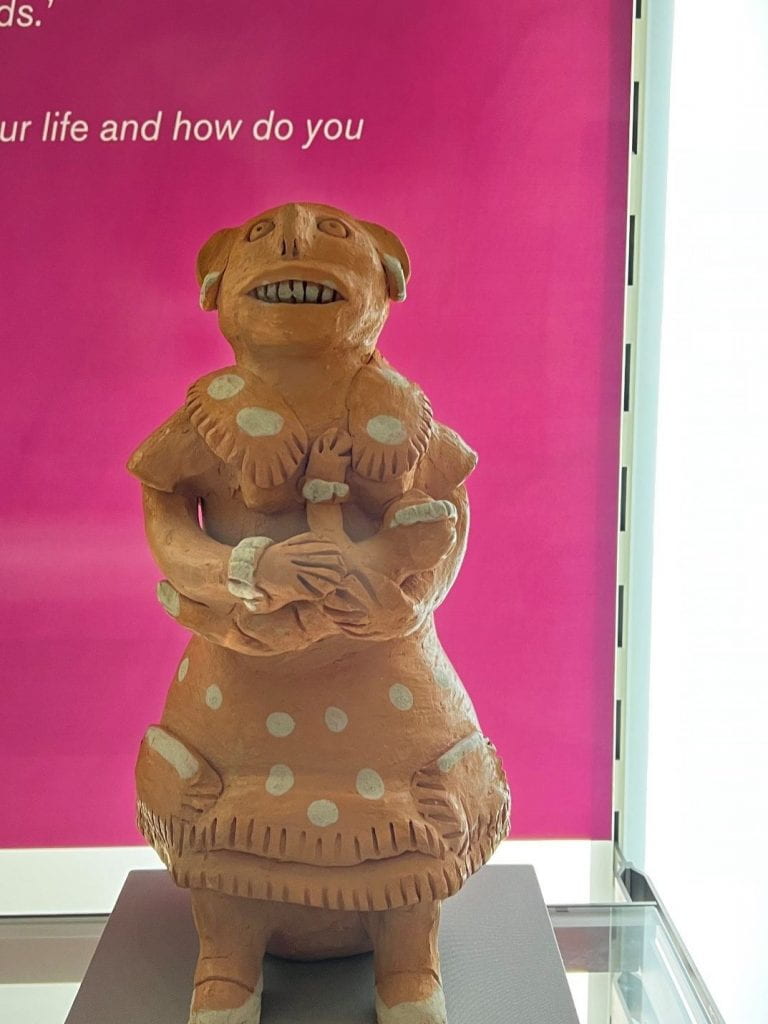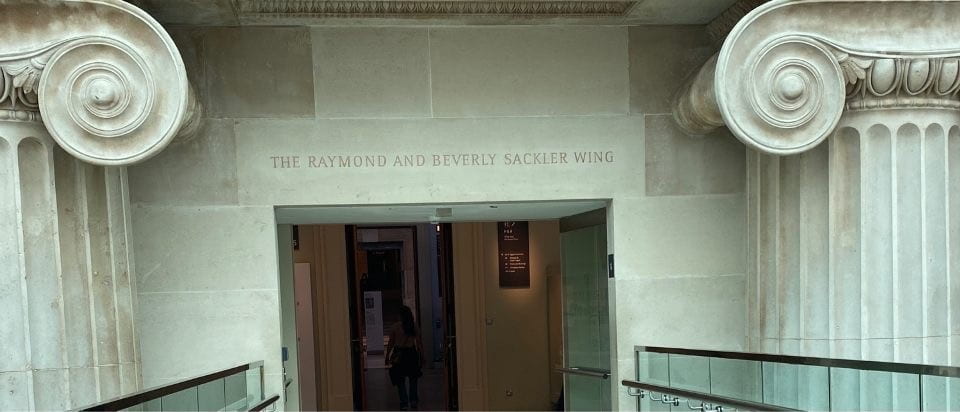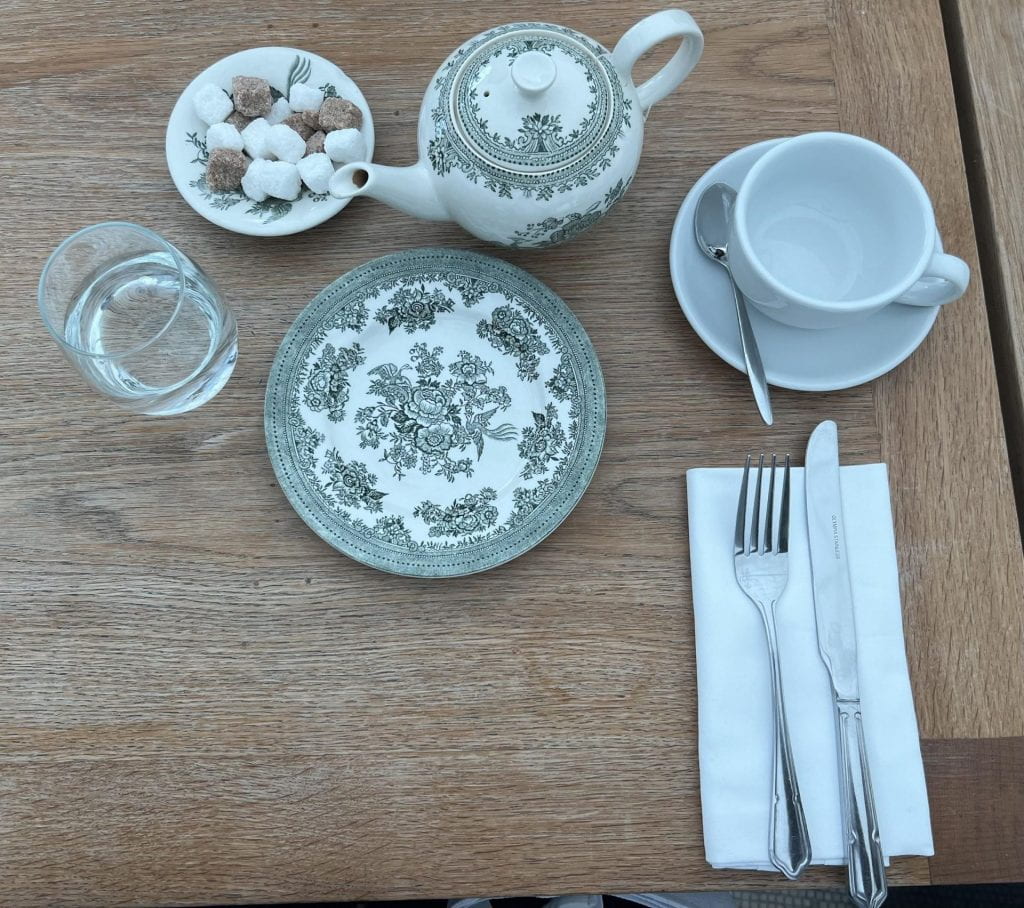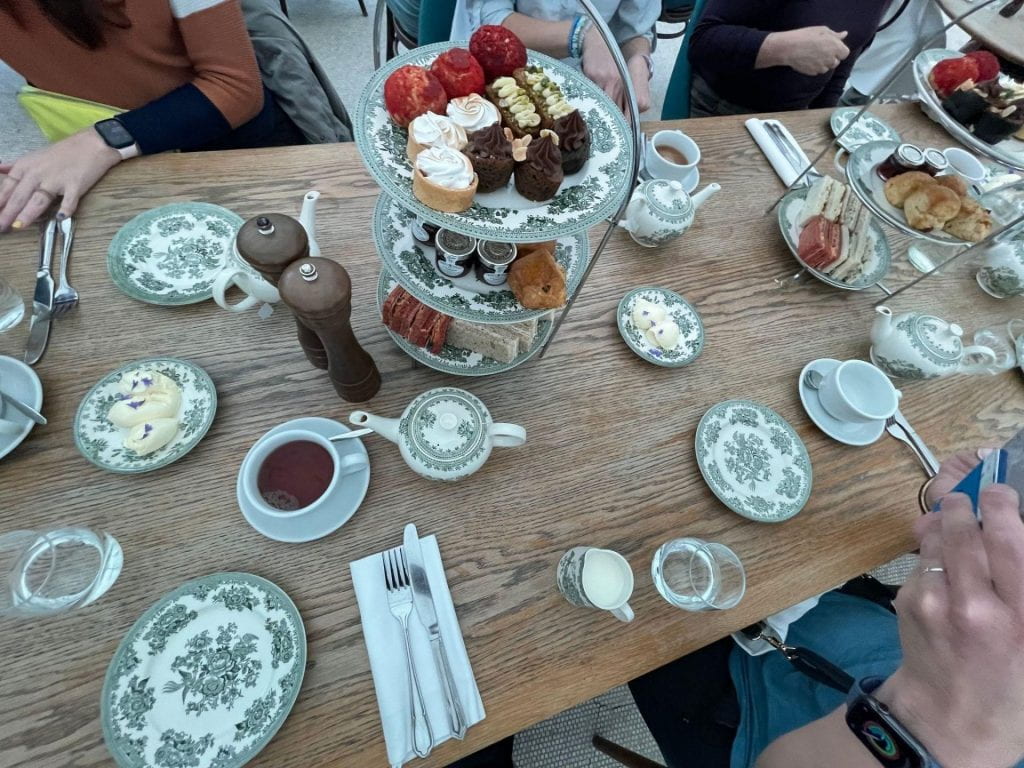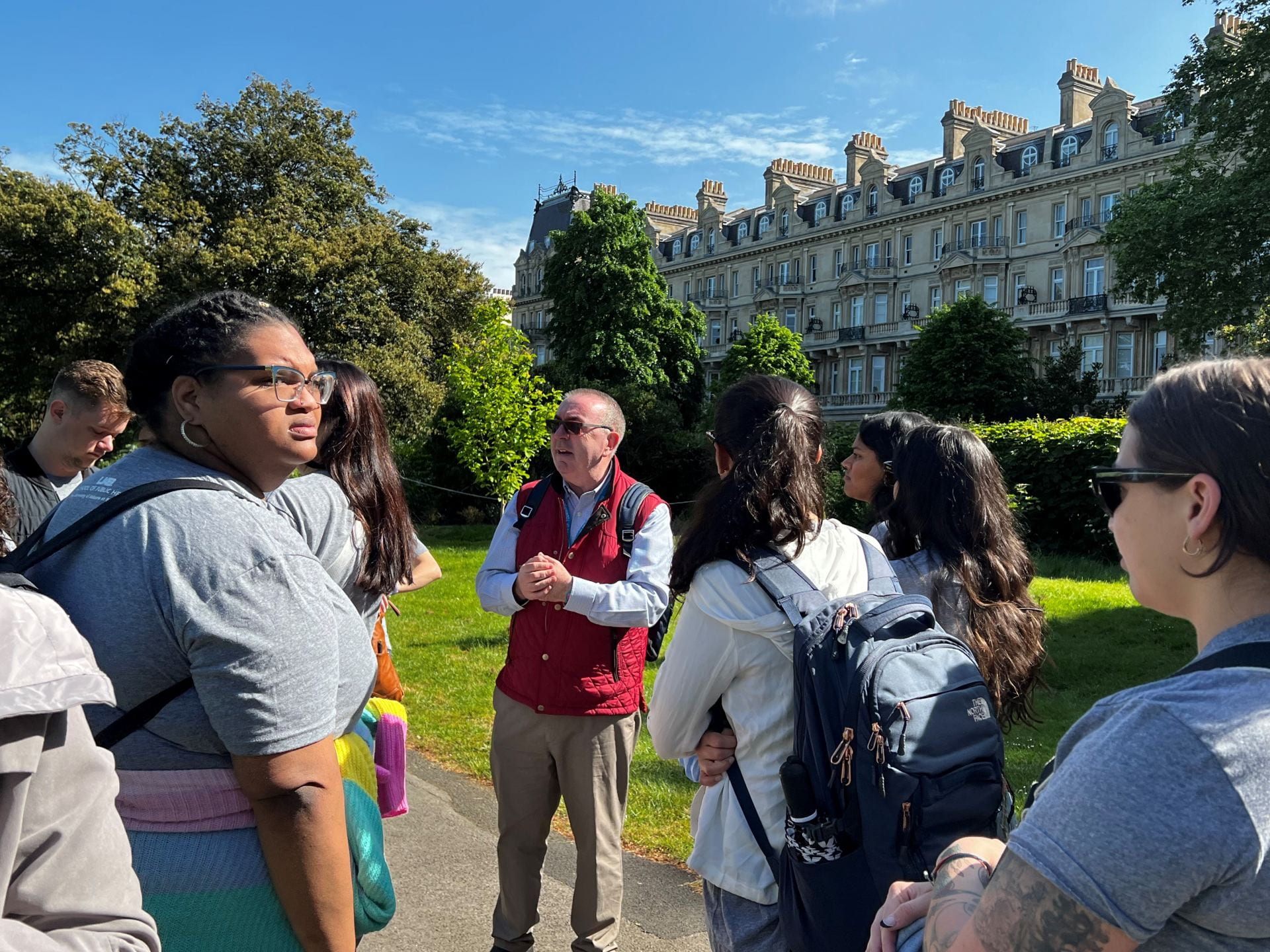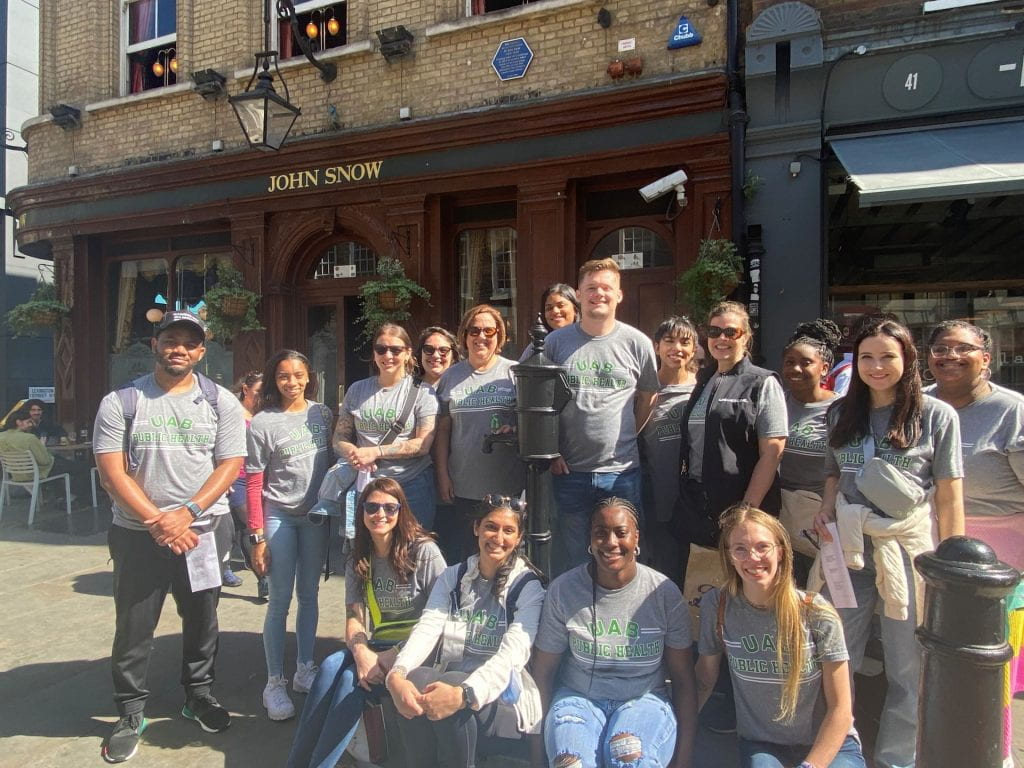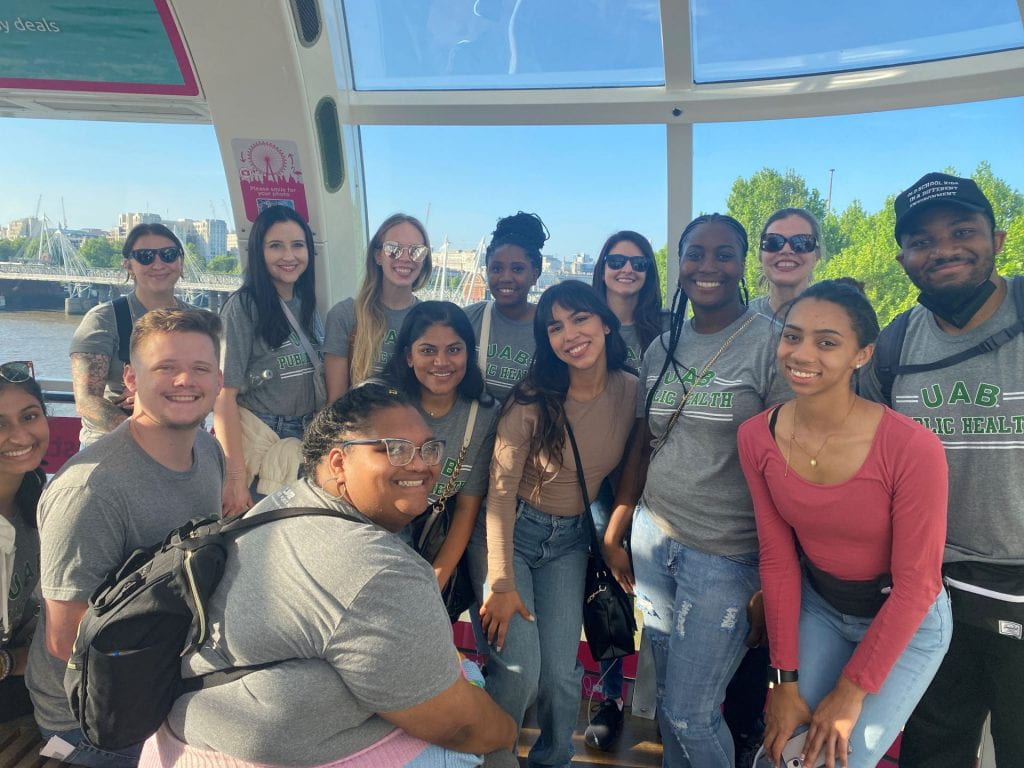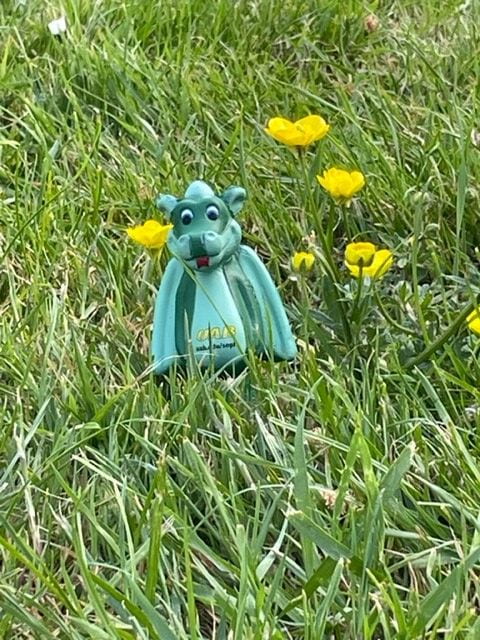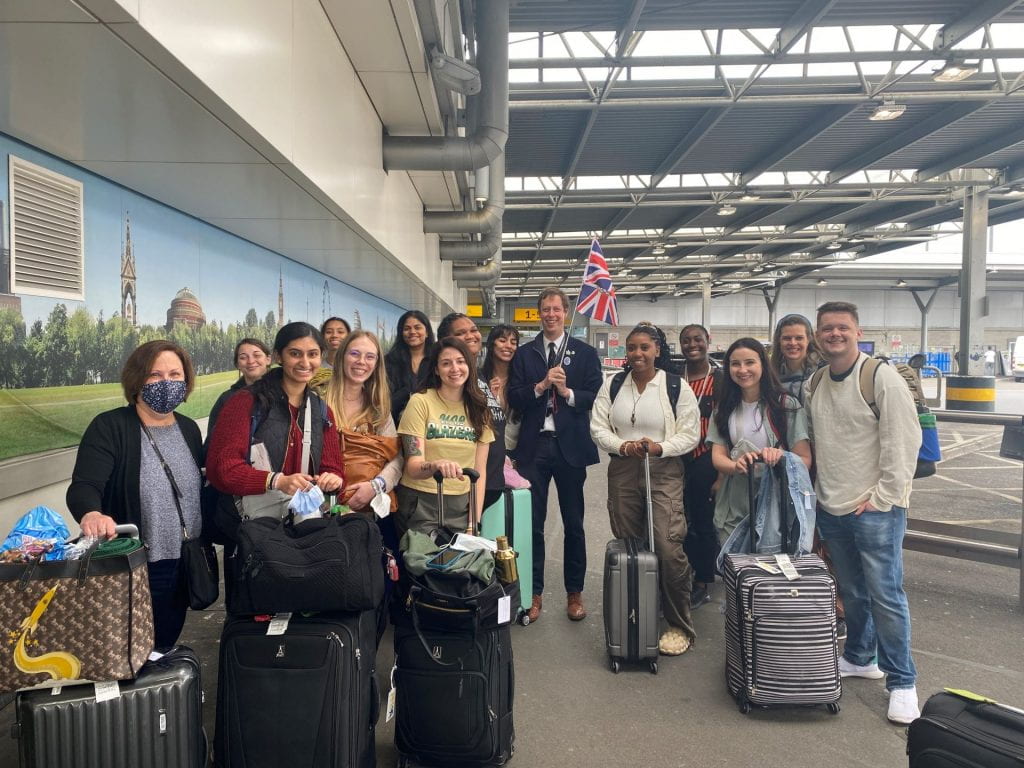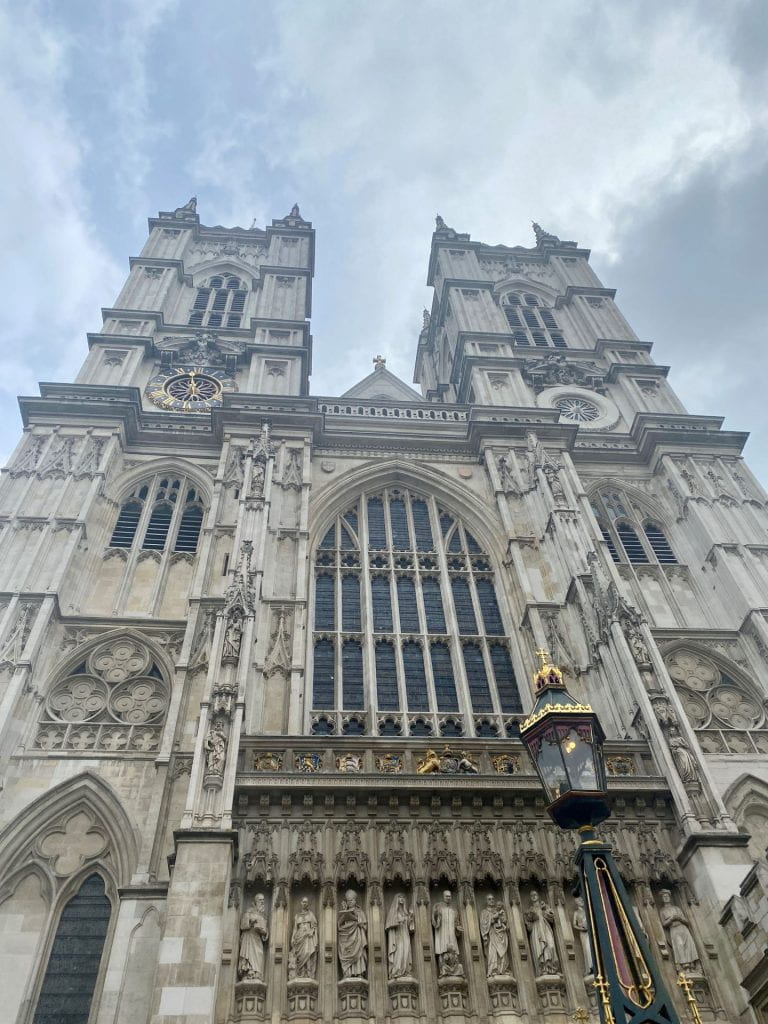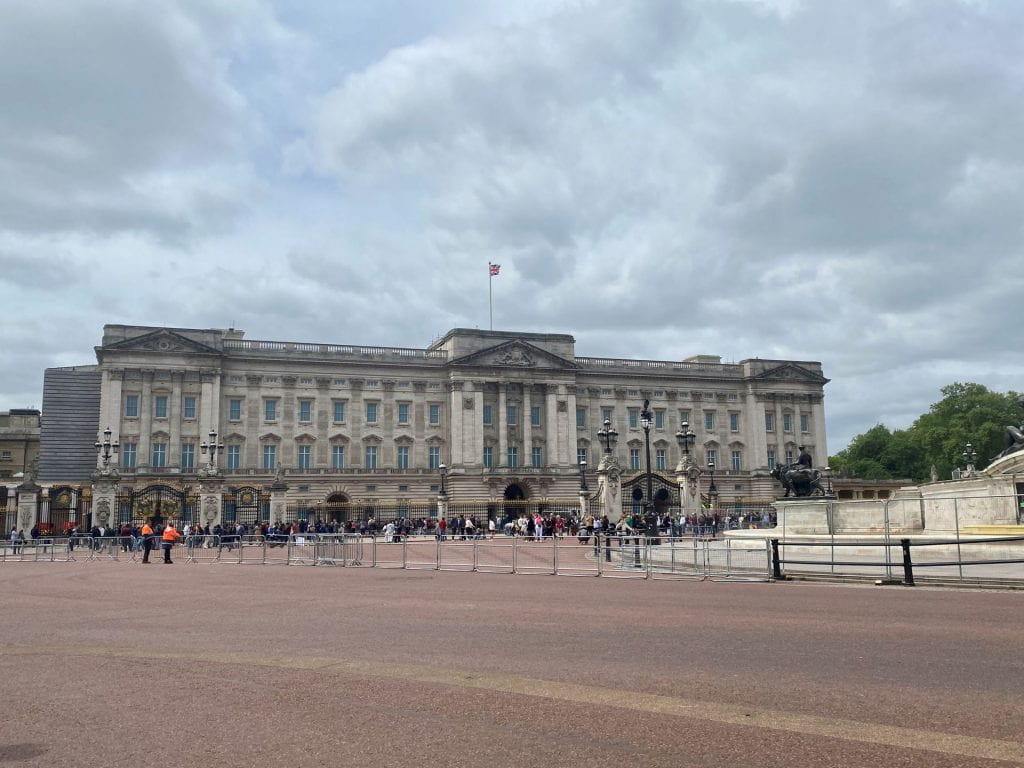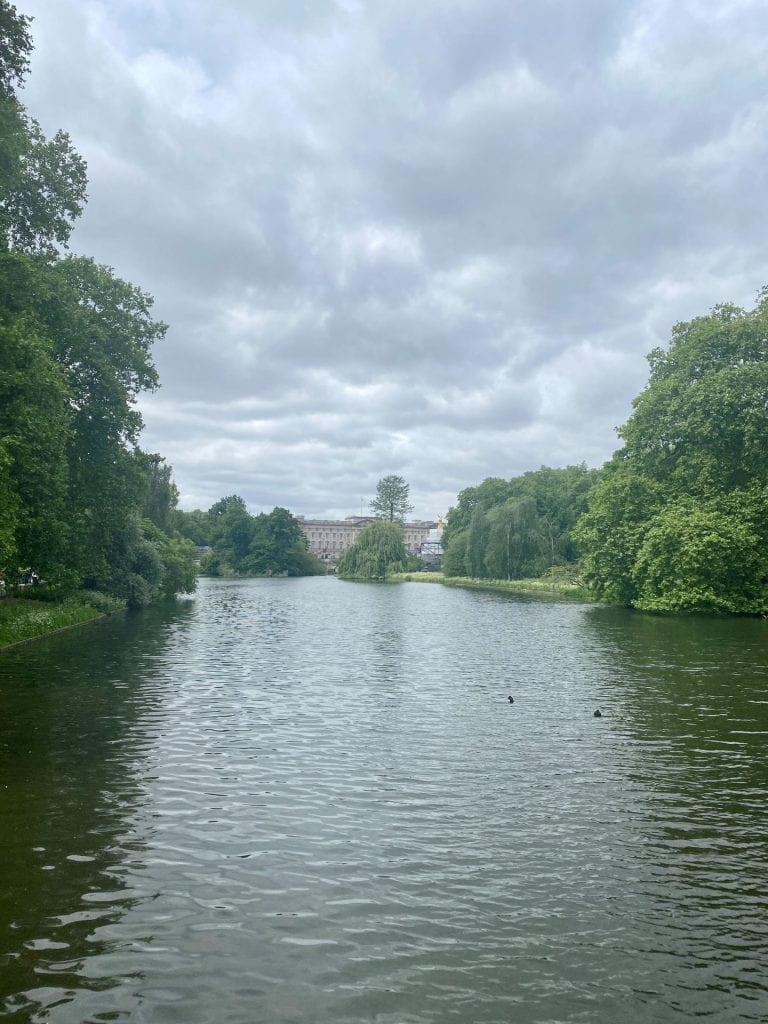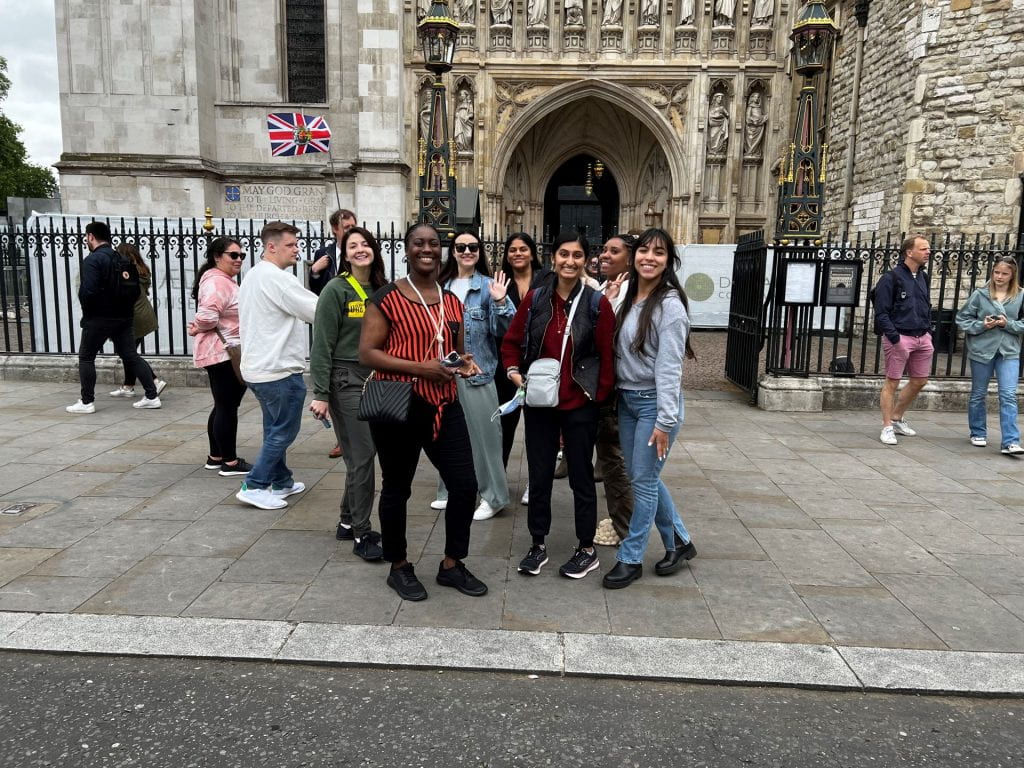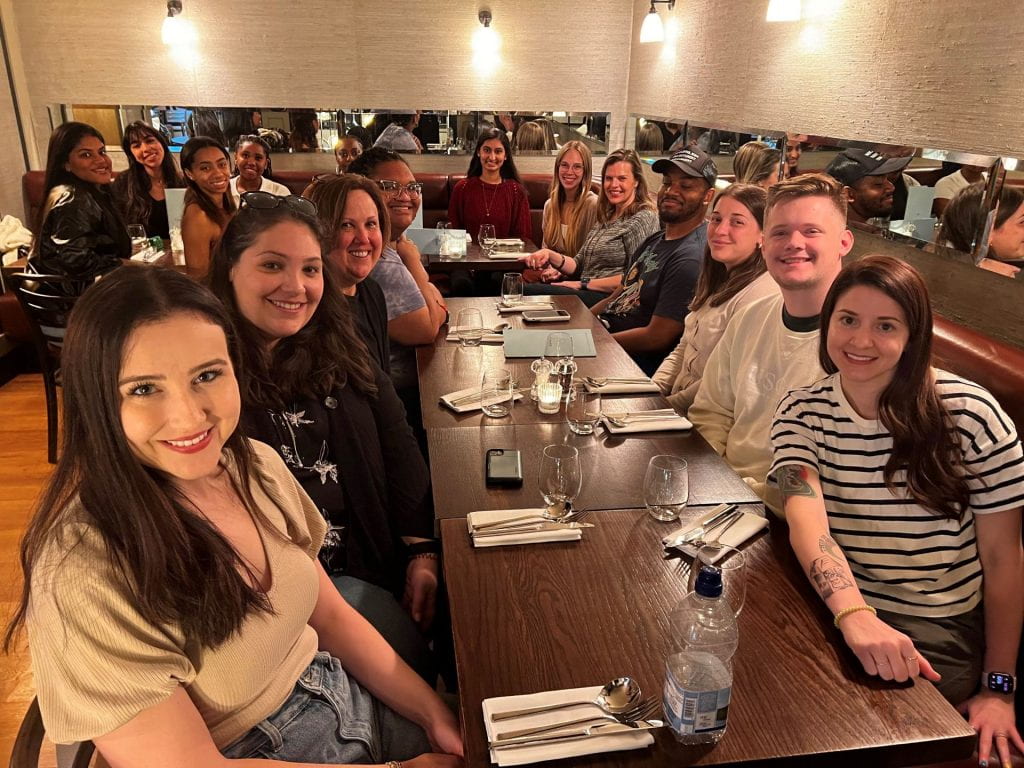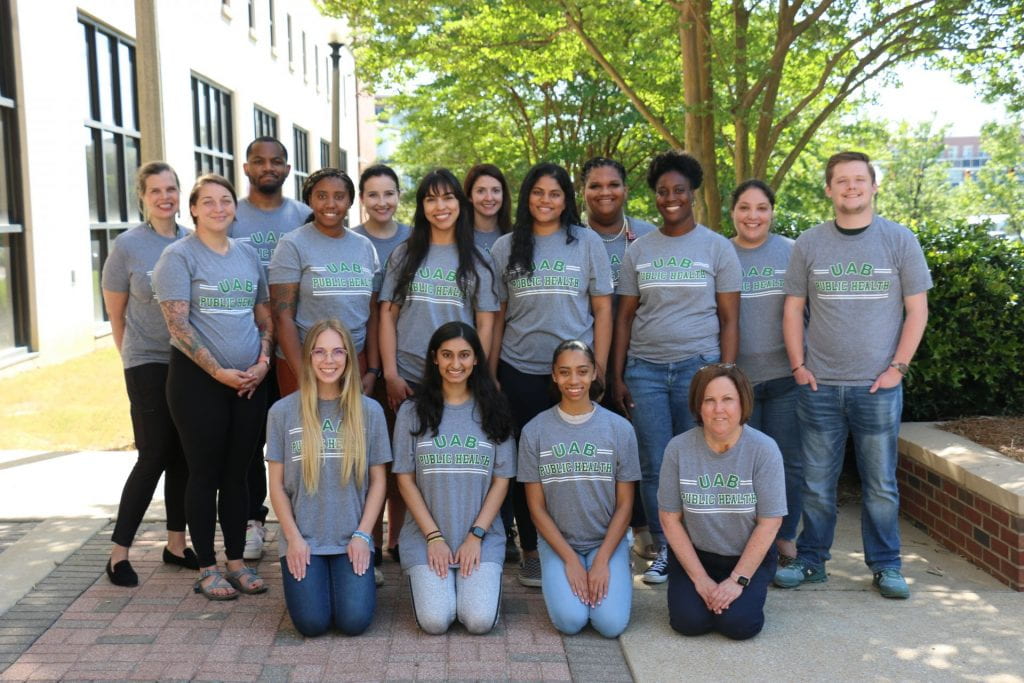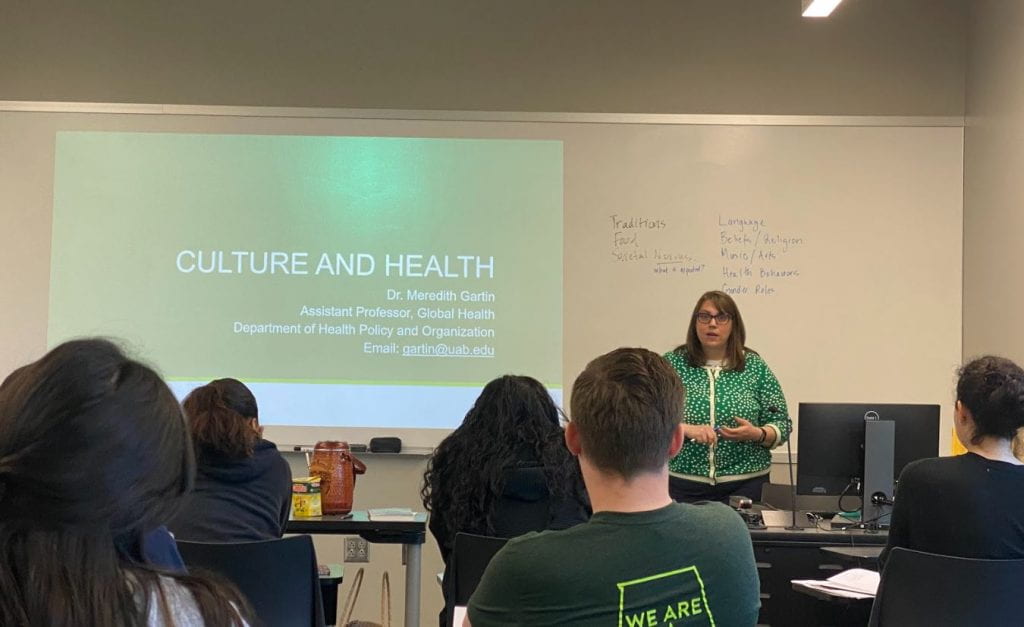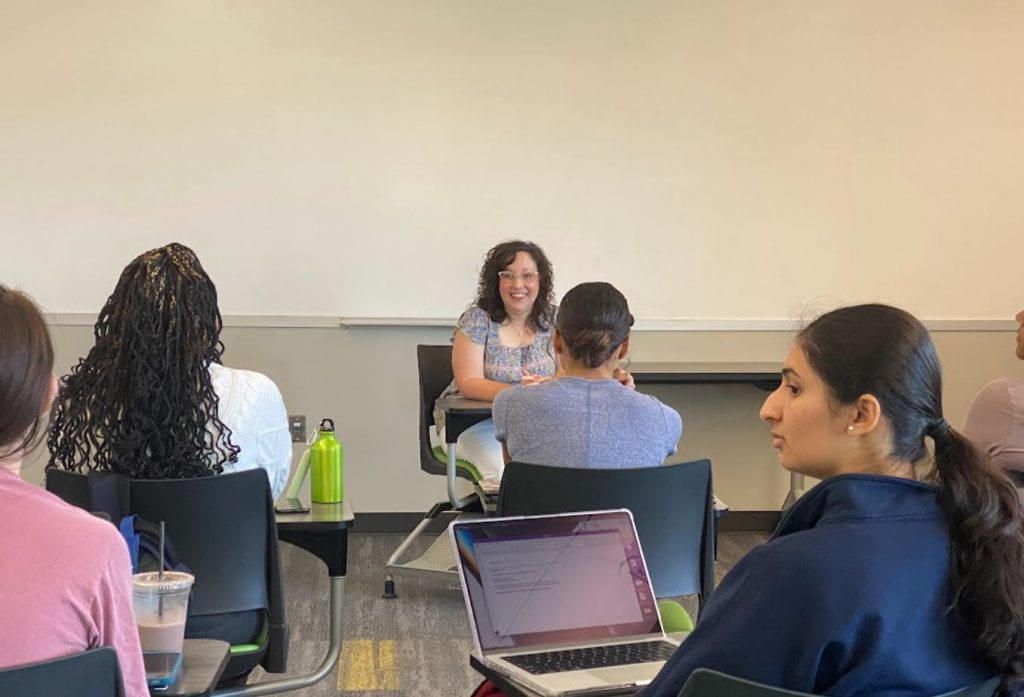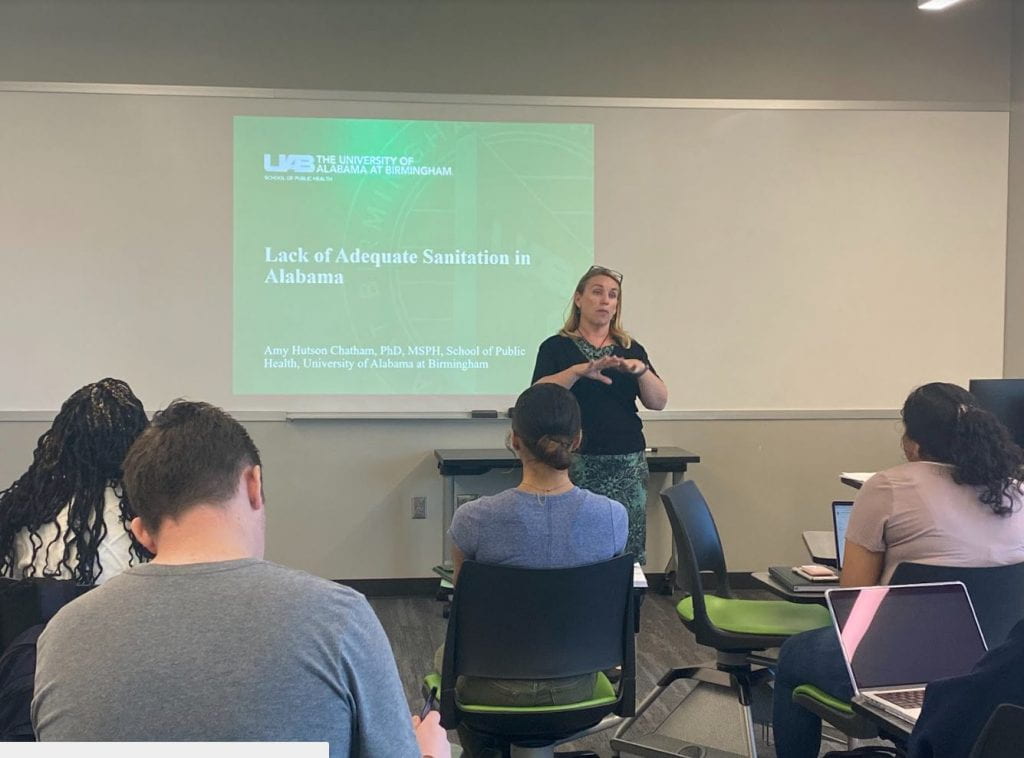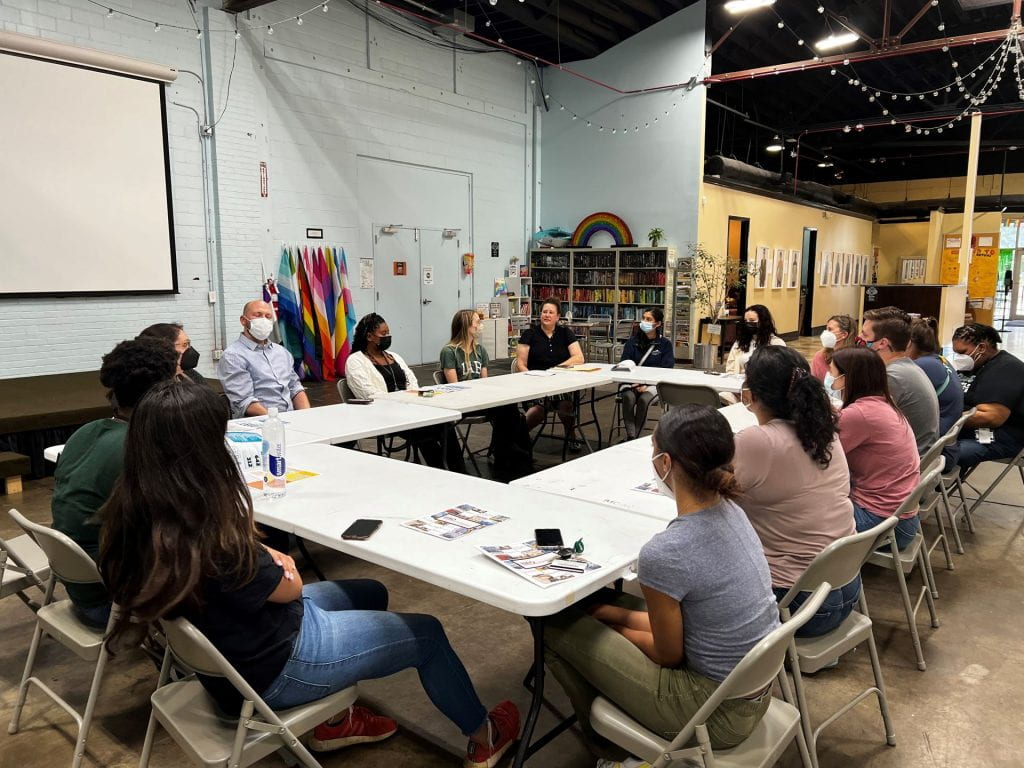Population Health in the United Kingdom was thoroughly explored as sixteen people from UAB embarked upon a sixteen-day journey to compare, contrast, explore and explain problems and perspectives associated with health and wellness issues in a variety of geographies. So where do we begin with so much to share? The following paragraphs are a recap of our many public health adventures.
Our global health journey began in UAB’s University Hall where we were greeted by Dr. Lisa McCormick, Meena M. Nabavi, MPH Program Manager, and fellow classmates. All had enthusiastic smiles and much anticipation after spending close to two years with minimal study abroad or educational travel opportunities due to COVID-19.
Our time together in Birmingham, AL included a variety of speakers who spoke about various public health issues, which provided a strong foundation for comparisons in the UK. Guest lecturers and topics included the following:
- Amy Chatham, Assistant Dean for Undergraduate Public Health Education at UAB, took us through her work dealing with sewage and water treatment throughout the Blackbelt region of Alabama.
- Meredith Gartin, Assistant Professor of Global Health in the Department of Health Care Organization and Policy at the UAB School of Public Health, spoke about culture as a social determinant of health along with health matters within the migrant and refugee communities.
- Kachina Kudroff, Prevention Manager at the 1917 Clinic at Dewberry, taught the group about HIV/ AIDs treatment and outreach.
- Carrie Leland, Executive Director of Pathways, spoke about physical and mental health issues among unhoused females in Birmingham, AL.
- Karen Musgrove, CEO for Birmingham AIDS Outreach and the Magic City Wellness Center, and Josh Bruce, Education Director for Birmingham Aids Outreach shared on the multiple entities within their organization:
- Magic City Acceptance Center
- Magic City Legal Center
- Magic City Research Institute
- Magic City Acceptance Academy
- Magic City Wellness Center
- Magic City PrEP
This was just the start to our newfound knowledge and a peek into the hard yet rewarding work of the course. Not only was the group evaluating the health of people, but also the health of the environment. Doctoral students provided all with the tools and training to conduct built environment assessments for Birmingham, London, and Aberystwyth. We examined housing, sidewalks, pedestrian safety, litter, and other aspects of the built environment.
“My favorite part of the trip was to be able to see how different each city/ town is compared to each other. London, England, and Aberystwyth, Wales are such walkable cities. We walked more on our trip than we each have in Birmingham! When we were not walking, we had the opportunity to navigate the public transportation system. We truly saw every part of London, even the underground” said student Mya Fluker.
She also noted that “people have places to go in London and therefore their sidewalks and public transportation are a priority. The attitudes of people living in London and Aberystwyth are very different from Birmingham. Being able to witness their differences with our own eyes was a once-in-a-lifetime experience. We will now never forget to ‘mind the gap’, not only when stepping off of the subway but also when solving the gaps in our healthcare systems and built environments.”
More than 4,000 miles later, the group gathered again to focus on public health from a London point of view. A variety of public health activities were conducted including the following:
- A walking tour of John Snow’s journey to discover the source of cholera
- Exploration of public health themes in artifacts at the British Museum
- Visit to the Queen’s Nursing Institute with lectures by the following:
- Commander of the British Empire and Chief Executive Dr. Crystal Oldman talked about the role of nursing in public health.
- Staff member Kendra Schneller, shared about public health issues among unhoused individuals.
- Professional Nurse Advocate Rebecca Daniels shared the need for people in healthcare to prioritize self-care.
- An informational session on mental health and the Dove Self-Esteem Project with Stacie June Shelton, Unilever Global Head of Education & Advocacy and UAB MPH alumnus
- A visit with the Terrence Higgins Trust (THT), UK’s largest nonprofit HIV and sexual health organization. Presenters included the following:
- Laura Scott, Policy and Research Officer
- Debbie Laycok, Head of Policy and Public Affairs
- Ngozi Kalu, Research and Policy Officer
- Alex Sparrowhawk, Prevention Programme Officer
- Chamut Kifetew, Prevention Project Manager
- Stephan Gampenrieder, Head of Advice Service
On the second leg of our Study Abroad trip, we visited the seaside town of Aberystwyth, Wales. Taking the train from London to Aberystwyth was an experience all its own. It felt like being part of a Harry Potter film riding down the sloping hills and sheep-filled pastures of Wales all the while patiently waiting for the sweets trolley to make its visit to our train car.
We arrived in Aberystwyth on May 18th pulling into the station where the railroad ends. Jumping off the train, we were immediately greeted by the smiling faces of our Aberystwyth University hosts Marian, Sarah, and Ellie and by the not-so-friendly smell of sheep grazing in the nearby fields.
The heart of Aberystwyth is the promenade on the waterfront. Soft and pastel-colored row houses and storefronts line the pebble beach shore inviting students, friends, and families to take a leisurely stroll along its path. Like much of Wales, Aberystwyth wouldn’t be the same without its steep and hilly landscape. At the top of the hill is one of the town’s crowning jewels, Aberystwyth University. During our time in Aberystwyth, we stayed in the University’s bunkhouses getting a taste of classic dorm life.
For the students of Aberystwyth University, their exam season had just started to wrap up, but during our brief stint as Uni students we, fortunately, didn’t have to suffer through any exams ourselves. Instead, we had the opportunity to learn from some of Aberystwyth’s own professors about their work in the field of public health and community outreach. From a live-action demonstration of an oral glucose tolerance test courtesy of Dr. Rhys Thatcher to learning about how saving the rhinos falls into Public Health from Dr. Darrell Abernethy, students were truly immersed in the public health work being done in Wales. Other lecturers included Professor Paul Brewer, who provided insight on mining impacts on river systems, and Dr. Rachel Rahman, who shared her research on telehealth mental health services.
While in Aberystwyth, we had the opportunity to explore the National Library of Wales. Led by head librarian, Dyfan Graves, we toured the historical building and the treasures housed within. Receiving the highest listed status, we were told that for the historical portion of the building nothing can be changed or even moved from its original position. The listing status of the building pairs well with the library’s dedication to preservation. At the Library, students had the opportunity to hold a 500-year-old Bible, one of the first-ever written in Welsh. We went on a behind-the-scenes tour to some of the library’s most secure stacks seeing their vast collection of manuscripts, photographs, maps, and even paintings.
One of our favorite experiences in Aberystwyth was visiting the Aber Food Surplus. Dedicated to feeding the community delicious and nutritious food, the food bank is open for the entire community to use. We spoke with Director Heather McClure about her journey starting the Aber Food Surplus right after finishing her time at university. Passionate about people and feeding them quality foods, Heather saw a gap in her community’s ability to access nutritious foods at any pay scale. Partnering with local restaurants and grocery stores, the Aber Food Surplus takes good food that would otherwise be destined for the dumpster and gives it new life by feeding the community. At the food surplus, nothing goes to waste. Any food scraps or paper packaging is composted and turned into high-quality soil for the community garden helping to feed even more of Aberystwyth’s population. Lending a helping hand, while at the food surplus students helped chop veggies and cook up a yummy salsa.
After three days of experiencing Aberystwyth, the group headed back to London for a visit to the Wellcome Collection, which is a free museum dedicated to health, well-being, and the human experience. This non-profit establishment utilizes multiple mediums including live programming, exhibitions, broadcast, publishing, and interactive displays as a way to encourage and promote people to think more in-depth about how interconnected the institutions of art, science, and medicine are to life. We also discussed and finalized our assessments of the different built environments we explored, experienced, and evaluated. The class and study abroad session was wrapped up and finalized with an amazing farewell dinner in the historic Covent Garden area of the city.
Planes, trains, automobiles, footpaths, sidewalks, gravel paths, and of course – the tube, we experienced them all during our fast-paced, public health experiences in the UK. We succeeded in learning a great deal about public health, while at the same time – sharing in amazing food, diverse cultural experiences, and loads of new expressions. Contacts, connections, and friends were made on this amazing trip. In an effort to share as much as we can about our journey, we have included student videos highlighting our favorite parts of the course.
Exploring Population Health will be back in May 2023! Stay tuned for more details!
